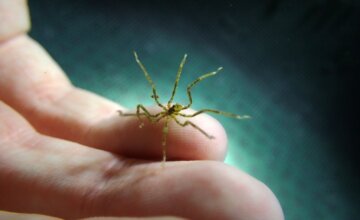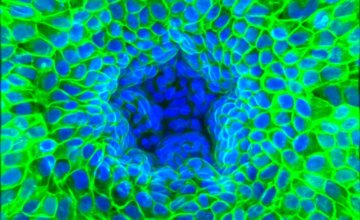Eléonore Vercruysse defended her PhD Thesis « Bridging the gap between individual and collective cell migration » on Friday 4th February 2022.

Epithelial cells collectively migrate in the human body in a compact and cohesive monolayer. This characteristic is necessary to ensure the barrier role of epithelia and mainly relies on intercellular adhesions. In physiological and pathological conditions, such as metastasis formation, there is evidence that not only single cells, but groups of polarized cell clusters detach from the primary tumor lesion and migrate in a high directional persistence mode. However, how is the migratory efficiency of these cell cohorts modulated by their size and intercellular adhesions remains unclear.
To answer this question, we designed an experimental platform based on protein micropatterning, with which we formed standardized cell cohorts of varying complexities. We formed fibronectin microstripes of different widths (15, 30 and 45 µm) to impose biochemical boundary conditions. By modulating the microstripe width, we increased gradually the number of neighboring cells, and thus lateral cell-cell interactions. We used 15 µm wide microstripes for studying the migration of single epithelial cells and trains of cells connected to each other with axial intercellular adhesions, whereas 30 µm and 45 µm wide microstripes were used to observe the migration of epithelial cohorts with one or two sides of lateral adhesive contacts, respectively.
Our findings show that trains of cells on 15 µm wide microstripes exhibit a similar migration speed than individual cells, regardless the train length. Interestingly, the establishment of lateral adhesive interactions between neighbouring cells slows down drastically the migration speed of wider epithelial cohorts. Our results highlight therefore the importance of lateral adhesive interactions in fine-tuning epithelial migration. To confirm these observations, we used ethylene glycol tetraacetic acid (EGTA), a chelating agent, to break intercellular adhesive interactions by complexing calcium cations implied in cadherin junctions. Our results show that EGTA-treated cells of wide cohorts (30 and 45 µm wide) are significantly faster, whereas EGTA-treated cells in trains of cells exhibit similar migration speed, confirming the key role of cadherin-based intercellular junctions in collective migration dynamics.
To gain further insight into the mechanism that controls the modulation speed in collective epithelial systems, we performed traction force microscopy (TFM) experiments on train of cells (15 µm wide) and epithelial clusters of 30 and 45 µm wide. We found that the total contractile energy exerted on the substrate increases significantly with the cohort widening. Interestingly, the axial contractile stress remains constant, whereas the radial contractile stress increases significantly with the cohort widening, demonstrating that a large part of the contractile energy in large epithelial clusters is not affected to the direction of migration. We then quantified the internal stress distribution with monolayer stress microscopy (MSM). While the axial internal stress component is constant across the different clusters, the radial internal stress component increases significantly, suggesting that the internal stress exerted between neighbours increases with the establishment of lateral adhesive interactions. Altogether, this multiscale study of epithelial systems allows to explain mechanically why small groups of cells can migrate more efficiently than large assemblies.



